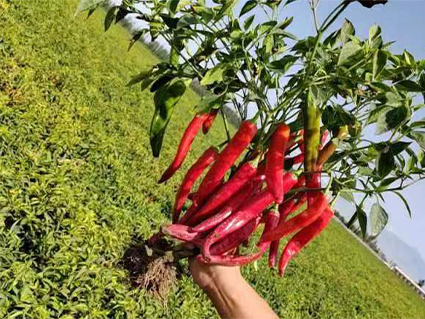- No. 268 Xianghe Street, Economic Development Zone of Xingtai city, Hebei 054001 China
- Byron@hbhongri.cn
paprika seasoning
The Spice of Life Exploring Paprika Seasoning
Paprika seasoning is more than just a vibrant red powder; it is a cultural icon, a culinary staple, and a versatile ingredient that elevates dishes from mundane to extraordinary. Originating from the peppers of the Capsicum family, paprika is celebrated for its unique flavors ranging from sweet and smoky to hot and zesty. This article delves into the history, varieties, health benefits, and culinary uses of paprika, showcasing why this spice deserves a central place in your kitchen.
A Brief History of Paprika
Paprika's history can be traced back to Central America, where indigenous peoples cultivated peppers thousands of years ago. The spice made its way to Europe in the late 15th century, following Christopher Columbus's voyages. It found a particularly warm reception in Hungary and Spain, evolving into a key ingredient in many traditional dishes. Over the years, paprika became synonymous with Hungarian cuisine, where it is the backbone of famous dishes such as goulash and chicken paprikash.
Varieties of Paprika
Paprika is not a one-size-fits-all seasoning; there are several varieties, each offering distinct flavors and colors. The most common types include
1. Sweet Paprika This variety is commonly used in dishes to add color without heat. It has a mild, sweet flavor that enhances salads, stews, and sauces. 2. Smoked Paprika Also known as pimentón, this type is made from peppers that have been smoked and dried. It adds a rich, smoky flavor, making it a great addition to meat rubs, marinades, and even vegetable dishes.
3. Hot Paprika For those who enjoy a kick, hot paprika provides a spicy heat that can elevate dishes like chili, curries, and even deviled eggs.
4. Hungarian Paprika This variety is highly prized for its bold flavor and vibrant color. It comes in a range of heats, from sweet to hot, and is essential for traditional Hungarian recipes.
5. Spanish Paprika Known for its deep, smoky flavor, Spanish paprika is often used in paellas, chorizos, and other dishes that require a robust spice profile.
paprika seasoning

Health Benefits of Paprika
Beyond its culinary uses, paprika offers several health benefits. Rich in vitamins A, E, and C, paprika can boost your immune system and improve skin health. It also contains powerful antioxidants like carotenoids, which have anti-inflammatory properties and may help reduce the risk of chronic diseases. Additionally, paprika has been linked to improved digestion and may even support weight loss by enhancing metabolism.
Culinary Uses of Paprika
The versatility of paprika makes it a must-have seasoning for any home chef. Here are a few ways to incorporate paprika into your cooking
- Soups and Stews A sprinkle of paprika can add depth and warmth to traditional soups and hearty stews, making them more flavorful and aromatic.
- Meat and Fish Dishes Rub paprika onto meats before grilling or roasting for added color and flavor. It pairs exceptionally well with chicken, pork, and fish.
- Vegetable Dishes Dust roasted or sautéed vegetables with paprika to enhance their natural flavors. It works especially well with potatoes, carrots, and bell peppers.
- Dips and Sauces Mix paprika into dips like hummus or yogurt sauce to create a zesty, colorful accompaniment for appetizers.
Conclusion
Paprika seasoning is a testament to the power of spices in transforming our meals. Whether you prefer the sweetness of mild paprika or the richness of smoked varieties, this vibrant spice adds not just flavor, but also a splash of color to your culinary creations. Incorporating paprika into your cooking can elevate your dishes while also providing health benefits. So next time you reach for the spice rack, don’t overlook paprika—the spice that truly embodies the essence of taste and tradition.
-
Unlock the Power of Nature with Capsicum Oleoresin ExtractNewsJul.03,2025
-
Unleash the Heat: Discover the Wonders of Spicy Crushed Red PepperNewsJul.03,2025
-
Unleash the Flavor of Red Pepper Pods – Elevate Your Culinary Creations!NewsJul.03,2025
-
The Rich Flavor of Red Pepper Dried – The Ultimate Ingredient for Your Culinary Creations!NewsJul.03,2025
-
Discover the Rich Flavor of the PaprikaNewsJul.03,2025
-
Discover the Flavorful World of Paprika & Chili ProductsNewsJul.03,2025







